Greetings Colleagues , this thread will be about photographs, watches and stories to be told. We will start by this photograph.

This photograph of an arm with a watch, in a deserted Prague square was taken by the photographer Josef Koudelka on August 21, 1968.
Faced with the demands for greater freedom, from the Spring to August of 1968, the Russian army rushed into the former Czechoslovakia to repel a possible uprising within the Eastern Bloc.
The photograph attempts to explain how the Soviet intelligence spread the rumor for the creation of a popular demostration, in such a way that its military action would be justified, as a kind of trap, lurking in adjacent streets, looking for the pretext of justified repression. Well, the demonstration was never carried out, the local radio stations were in charge of warning about it.
Evidence of the deserted square, it is the hand with the watch. The hand does not belong to the photographer, it is a composition with someone who was passing by. Over time, it has been known that the brand of the watch is Raketa, the caliber 2603 and the model is the 591028.
Not surprisingly, the Soviet Union produced watches for the entire Eastern bloc.
The author of the photograph is Josef Kouldelka, a Czechosolvacan engineer, aficionado photographer, returned to Prague after a report of gypsies in Romania, witnessing and capturing in photographs what was happening in Prague.
Koudelka had to leave Prague for fear of reprisals and his photographs were published in the Magnum Magazine, under a pseudonym, in 1969 he won the Robert Capa Gold Medal Award for his invasion photographs; the prize was dedicated to ‘an unknown Czech photographer’. Over time Koudlka was part of that agency and was also considered a stateless citizen, French citizen now , he is still lives today.
Making this point of Kouldelka’s life, let’s go back to watches.
The encircled below is the one that appears in the photograp
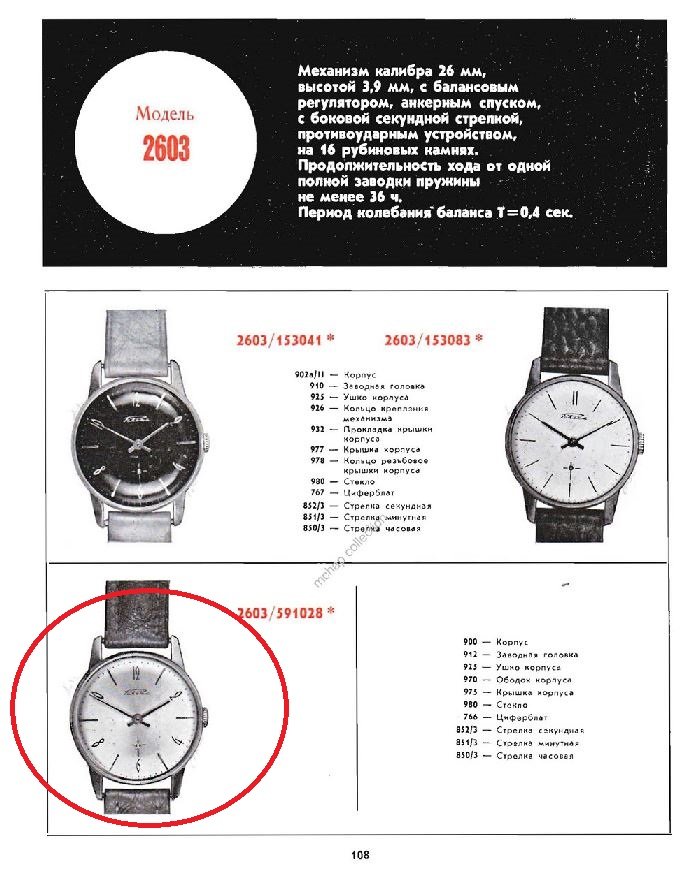
Photo from Raketa’s Catalog 2603 from 1968 (below)
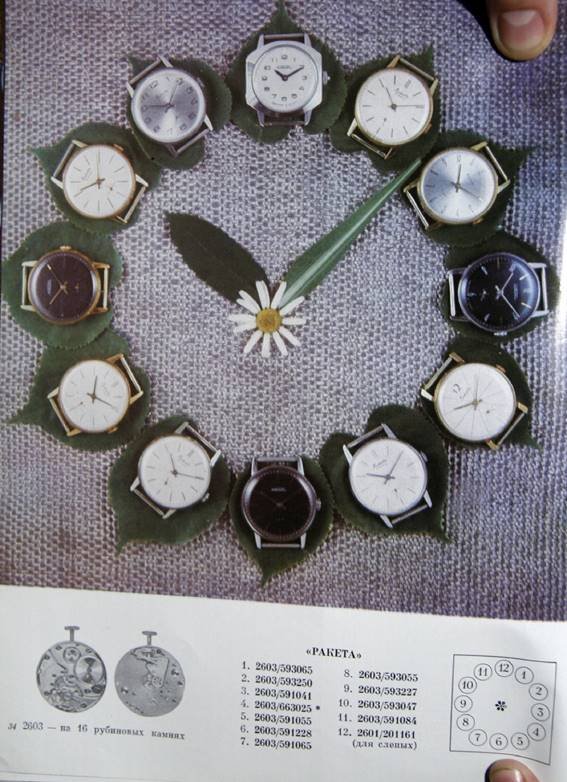
Overlay of the watch 2603 / model 591028 with the Koudelka’s photo.
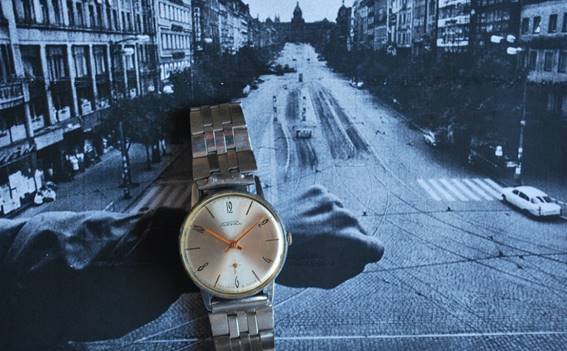
And several images taken by Kouldelka, accompanied by different watches,
Image 1
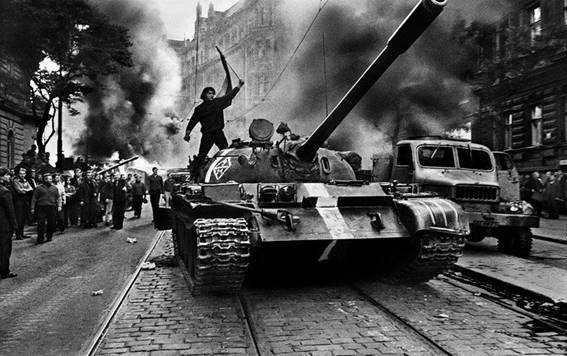
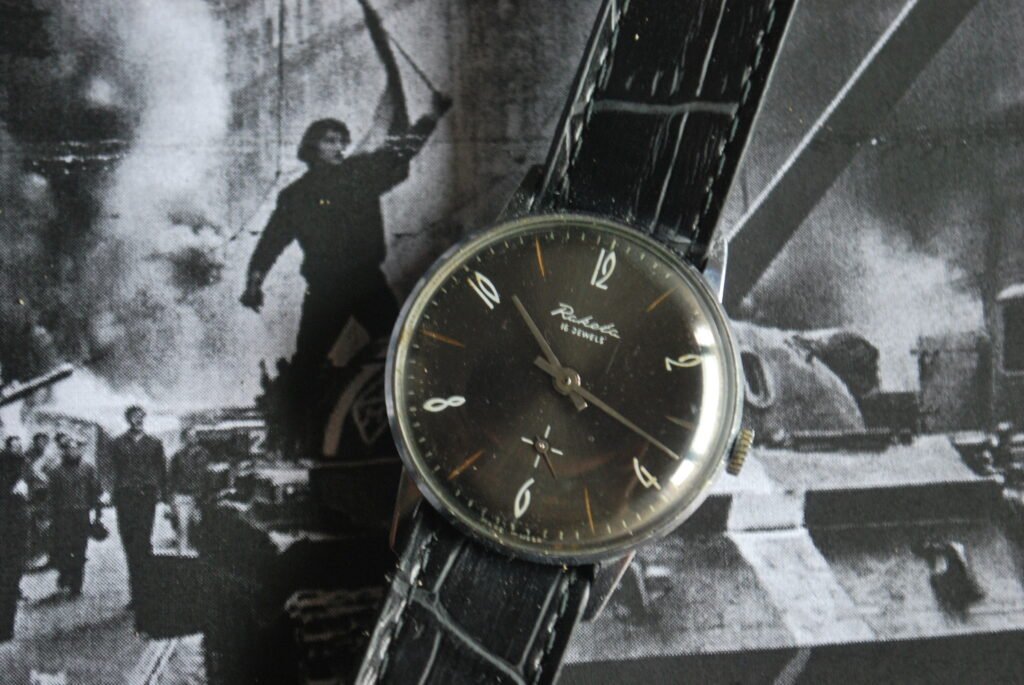
Image 2
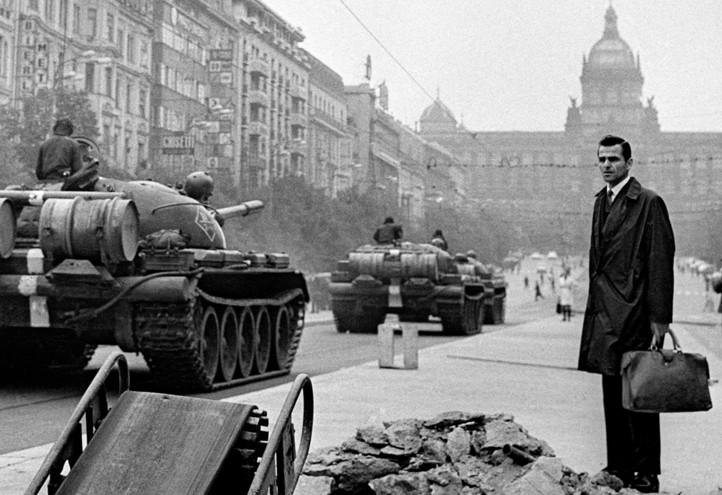
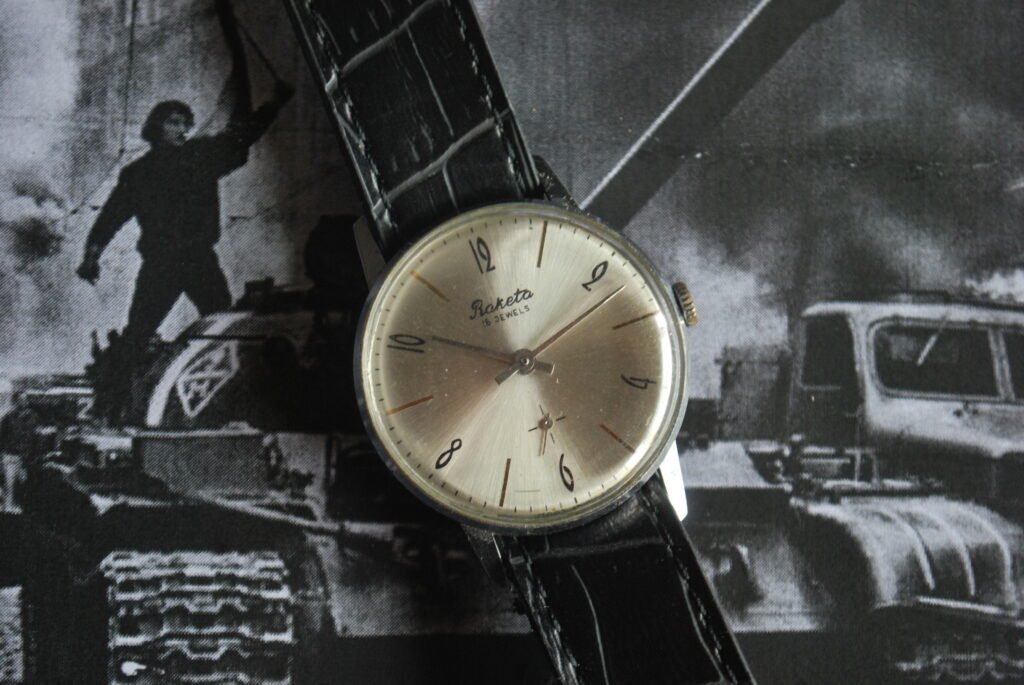
Image 3

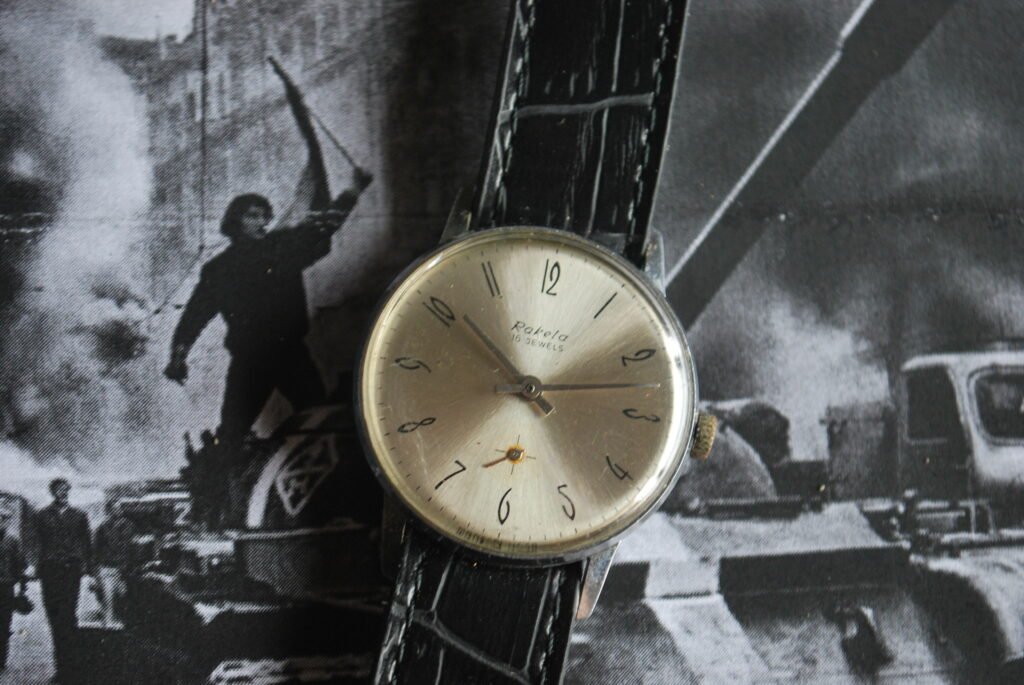
Image 4
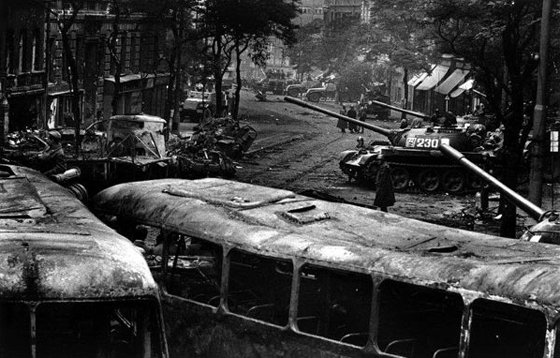
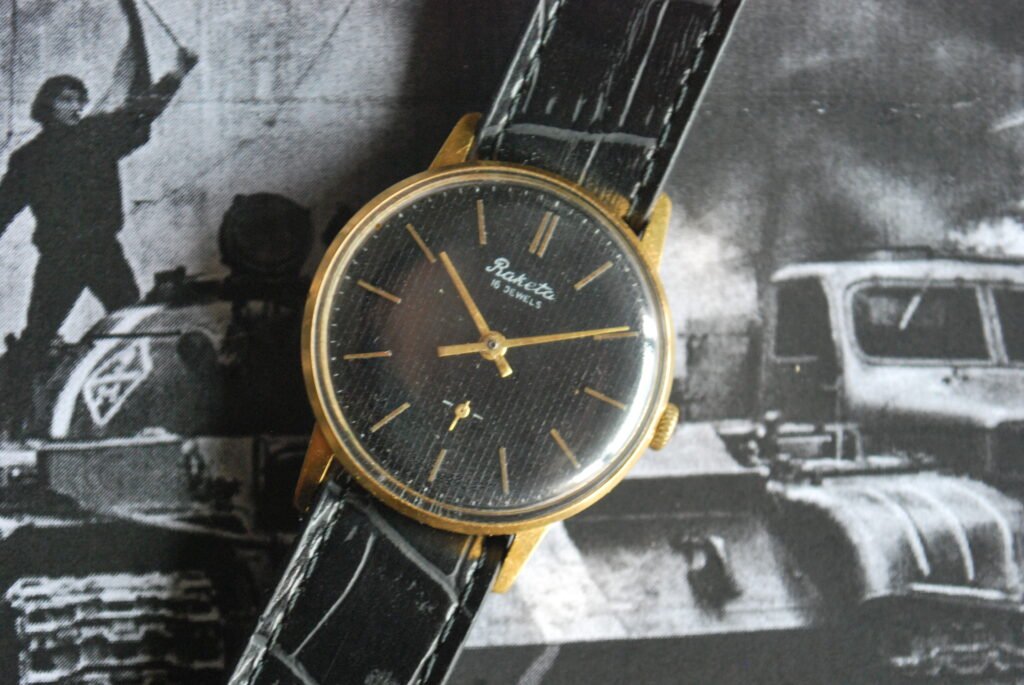
Image 5

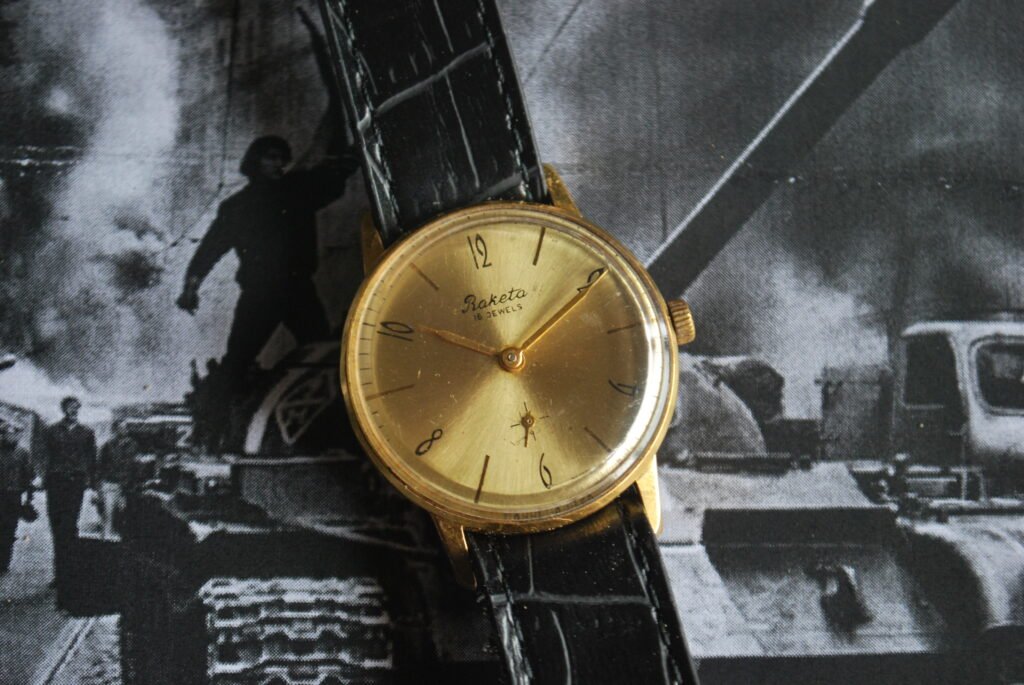
Image 6

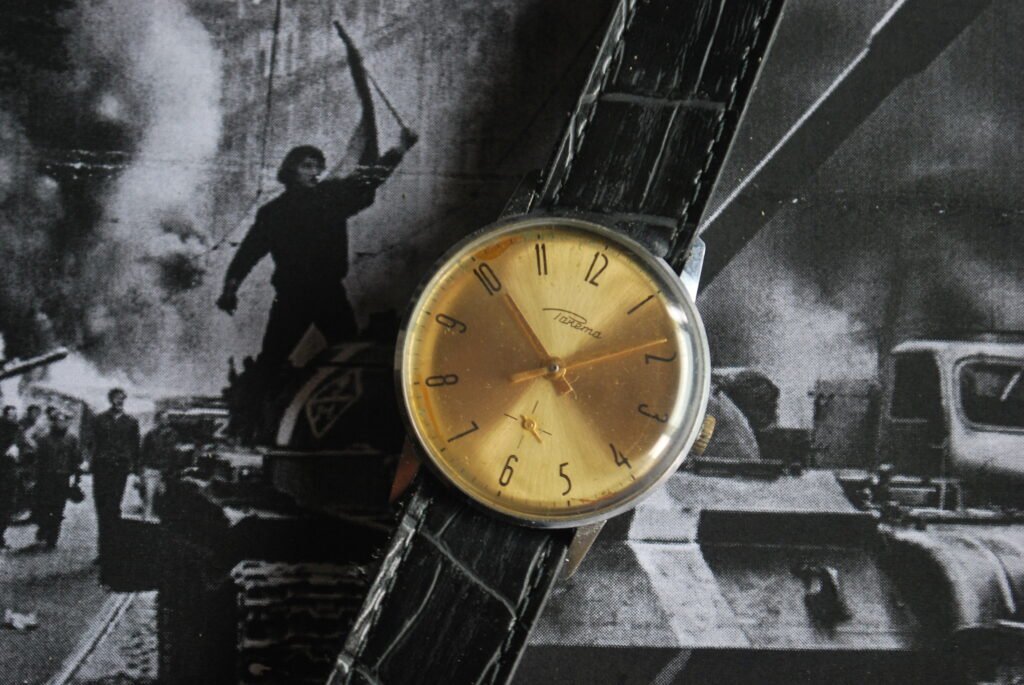
Image 7

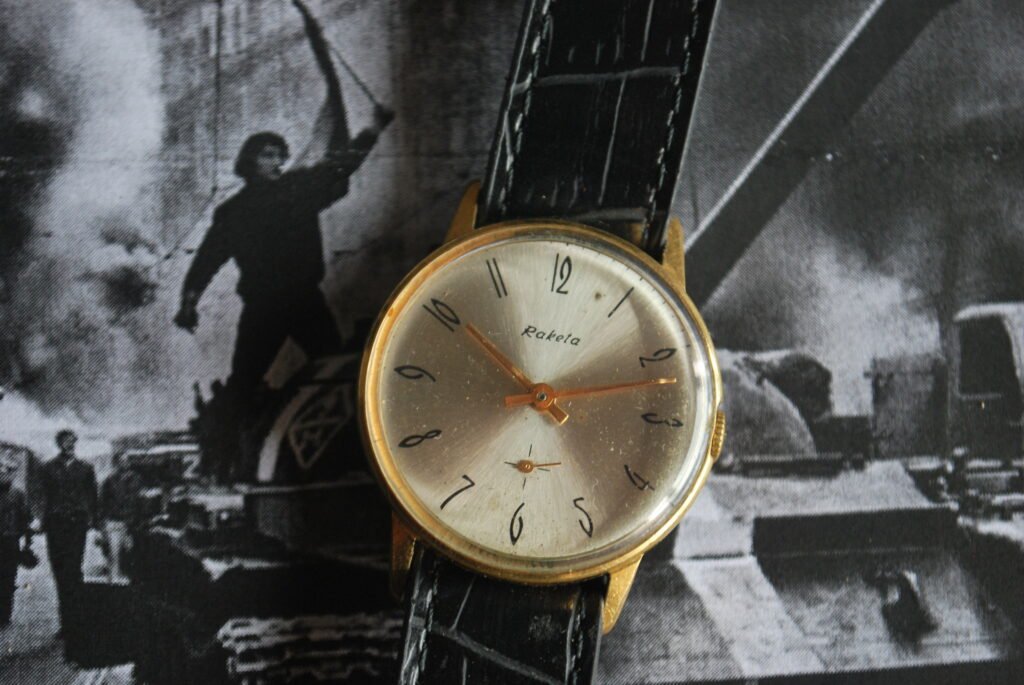
And now, finally, the overall image of Koudelka’s watches.
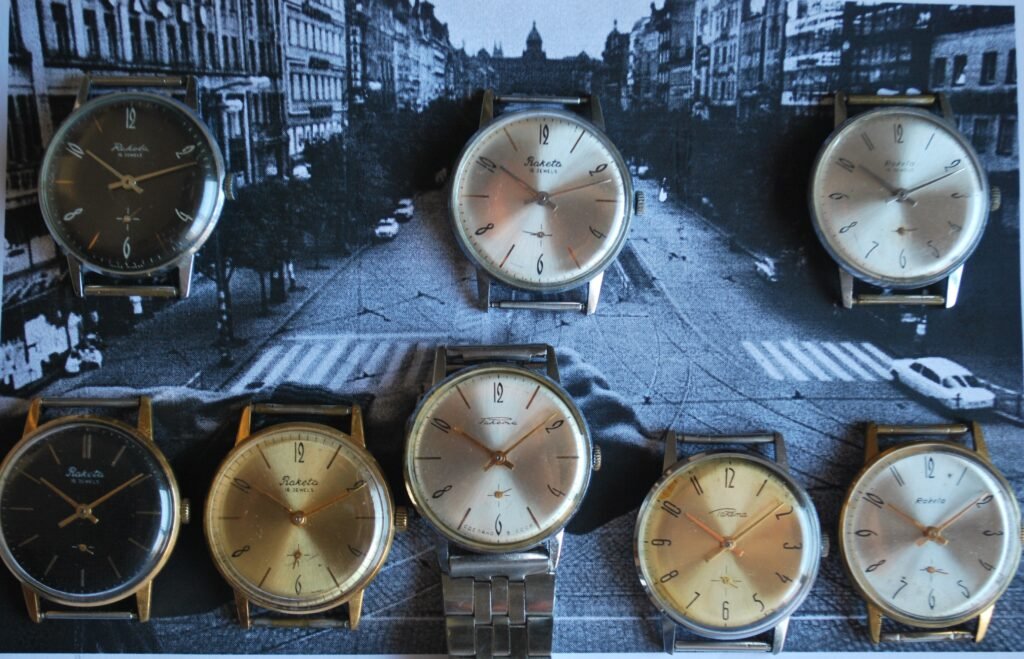
Links of interest:
Prague Spring
https://en.wikipedia.org/wiki/Prague_Spring
Interview with Joseph Kouldelka
https://www.theguardian.com/artandd…TRtiyIv2VT8xhtQ4jQ_aem_M15tGoCTrTRZCY__CIcfUQ

Josef Koudelka: The 1968 Prague Invasion • Magnum Photos Magnum Photos
On the 50th anniversary of the Soviet-led invasion of Czechoslovakia, Magnum photographer Josef Koudelka recalls the night the Prague Spring
![]() www.magnumphotos.com
www.magnumphotos.com
https://urss.watch/2020/11/07/la-raketa-2603-du-printemps-de-prague/
Josef Koudelka and the Raketa 2603 (Prague Spring)
It’s Springtime in Prague (1968) and Joseph Koudelka aims his camera down Wenceslas square and snaps a picture. The captured image shows the square in the background but in the foreground is an extended arm with a wristwatch attached. The time is 5:01. The time was no accident – Koudelka had…
www.watchuseek.com
————————-
KOMBAT
Another iconic photograph is the following, known by “Kombat”
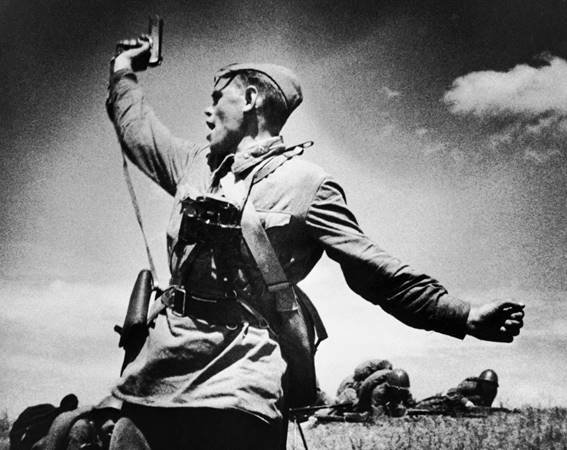
The photo shows Alexey Gordeevich Eremenko, who, with the rank of junior political instructor, assumed command after the commander, Lieutenant Petrenko, was wounded while repelling an attack by German troops near the village of Khoroshee. After gathering the retreating soldiers, Alexey led them to the counterattack and, according to one version, died in hand-to-hand combat; according to another, he died seconds after the photo was taken.
The image was taken by the photographer Max Vladimirovich Alpert

You will not say that the photo claims a certain similarity to the one taken by Frank Cappa, death of a militiaman, in the Spanish Civil War, back in 1937.

This Kombat photograph has been used by Soviet iconography, it appears on monuments like this one in the Luhansk region, Slavyanoserbsk district, Luhansk region where Alexei died
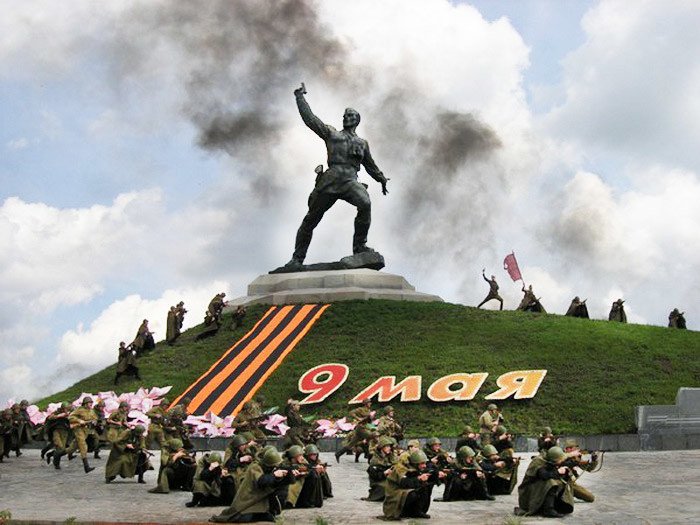
This iconography appears, of course, on watches.

Here we have a couple of Zims in a hermetic box , commemorating the 30th anniversary of the victory of the Second World War (above)

These are the back covers that we mentioned. (above)
The image also appears on some coins and other zim models. (below)
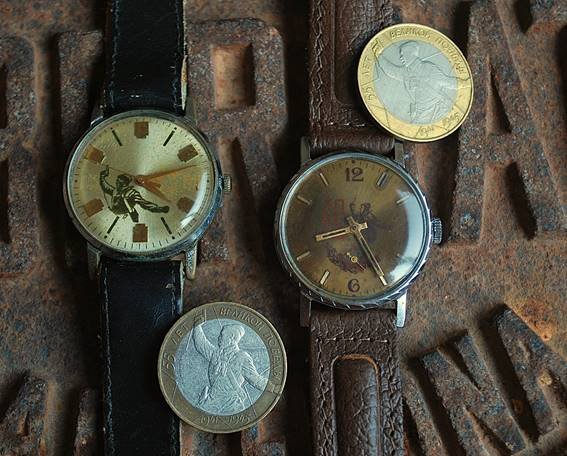
The Kombat image will also appear on the back cover of some models, specifically on the back cover of these commemorative Komandirskies.

On the back cover of one of them, we can write the following inscription:
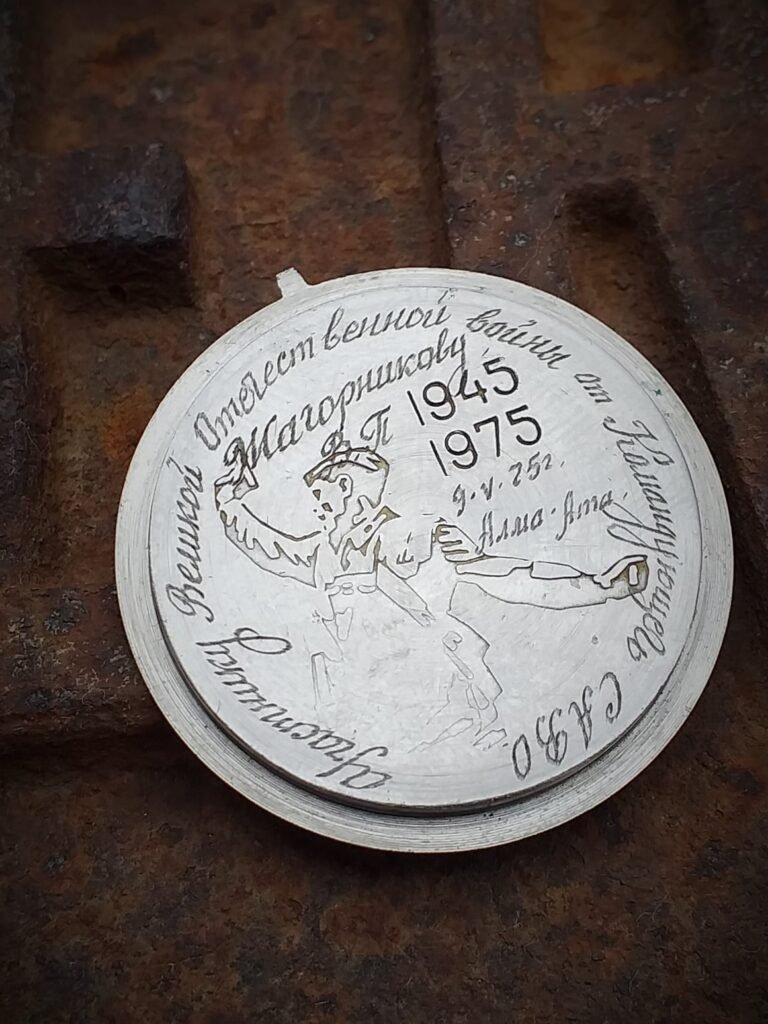
To the participant of the Patriotic War (World War II) of Commander G. Lt Lyahschenko, CABO (Central Asian Military District)
And while we are on the subject of photographs, and taking advantage of the good tone of conversation, let us look at the life of Major Lyahschenko, who came to Spain in 1937 and 1938, during the Civil War.
Excerpt from the Russian Wikipedia:
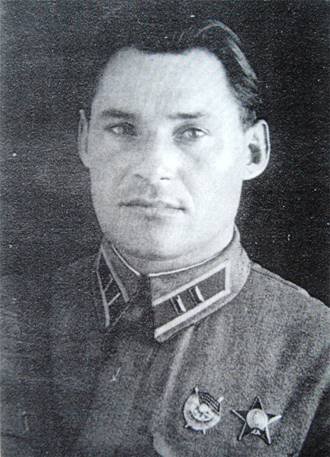
Biography
“Born in the stationby Zimain Irkutsk Oblast, now a city inthe Irkutsk region. Russian. He was the son of a blacksmith (from political exile) and a peasant woman. BeforeOctober Revolution of 1917, moved toKyrgyzstanwith his family. He lived in the city ofPrzhevalsk (now Karakol). He finished 2 classes of the night school for workers. He worked as a stableboy, hammer, blacksmith’s assistant at the Uryuktinsky cattle ranch, from 1925 – blacksmith in the village ofSazanovka, Issyk-Kul district, from 1928 to September 1929 – member of the trade union committee of the Uryuktinsky cattle ranch inKarakol, since February 1929 – instructor in the Agricultural Workers’ Union Committee in the town ofSazanovka, Kyrgyz Soviet Socialist Republicand instructor of the district branch of the agricultural workers’ union in Karakol[2].
Pre-war service
In the autumn of 1929, the Sino-Soviet conflict broke out in the CER. In October 1929, Nikolai Lyashchenko voluntarily joined the Red Army[3] to participate in the defense of the CER from Chinese militarists. The conflict was soon resolved and he was sent to study at the V. I. Lenin United Military School of Central Asia in Tashkent, where he graduated in 1932. He was a member of the All-Union Communist Party (Bolsheviks) from 1931. During his studies, as part of the combined cadet detachments, he repeatedly participated in combat operations against the Basmachi in Central Asia. For his distinction in combat, he received a custom weapon.
After graduating, from 1932 he served in the 217th Rifle Regiment of the 73rd Rifle Division of the Siberian Military District (Omsk): rifle platoon commander, deputy commander and rifle company commander , battalion deputy commander, sniper team leader and director of the regimental school for junior commanders. For the unit’s excellent combat training, in 1936 it received its first order: the Red Star.
From May 1937 to October 1938, Major Lyashchenko took part inthe Spanish Civil Warand he was military advisor to the division and corps commanders of the Republican Army. He was decorated with the Order ofthe Red Flag. Immediately after returning to the USSR, he was sent to study. In 1941, he graduated fromthe M. V. Frunze Military Academy of the Red Army. From May 1941, he was deputy commander of the 737th Rifle Regiment ofthe 206th Rifle Divisioninthe Odessa Military District(Zaporozhye). “
———————
Raising the communist flag at the Reichstag
Finally another iconic photo, raising the communist flag after the occupation of Berlin, taken by the by Yevgeny Khalde ,
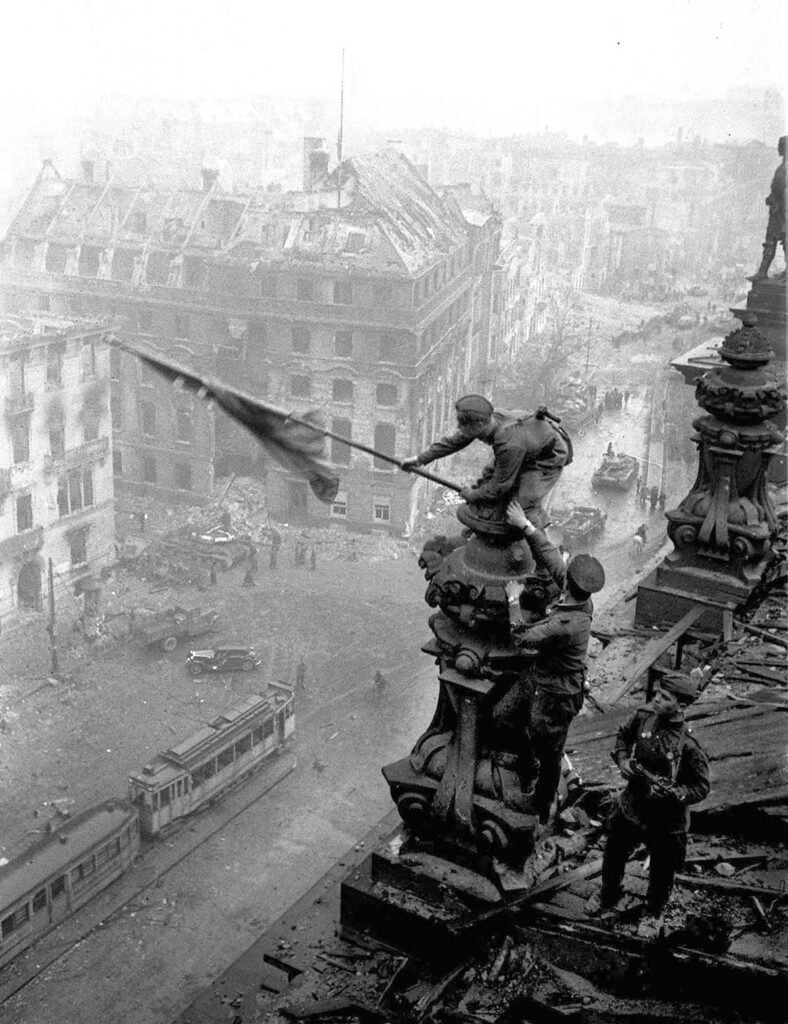
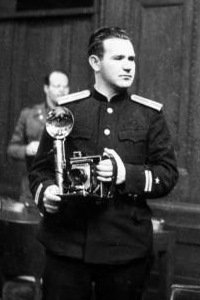
We will leave it for the reader , to see if he is able to decipher the mystery of the two watches worn by the soldier holding the flag bearer.
Greetings